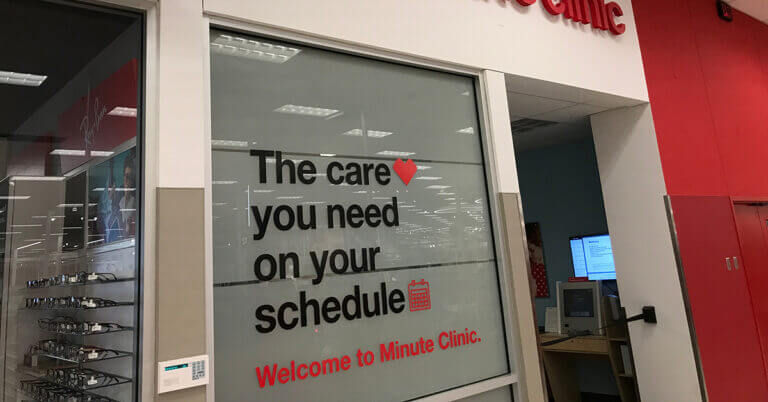November 10, 2020

32 Ways to Fix Healthcare If You Stop and Take the Time – Burda on Healthcare
As our 24-hour news cycle has shrunk to 24 minutes and, in some cases, 24 seconds, over the past four years, we’re all missing, forgetting or glazing over important news that in normal times would stop and make us think. Maybe give us ideas on how to change things for the better. Maybe energize us to act.
These are anything but normal times.
Still, I’d like you to pause, take a breath and read this column that reviews three plans to fix healthcare. Maybe you missed them. Maybe you forgot them. Maybe you glazed over them.
Each of the three offers well-thought out ideas on how to change healthcare in the U.S. for the better—how to improve quality, how to expand access and how to control costs.
No one expects the U.S. to adopt any of the three proposals wholesale overnight. But there are things in each plan that different segments of the healthcare system can do by themselves without anyone else’s approval. If anything, doing one of them would be a nice diversion from what’s happening now.
10 ways to get the care we need
The first proposal is from the National Quality Forum, and the reform plan is called “The Care We Need: Driving Better Health Outcomes for People and Communities.” The Washington-based NQF released its “roadmap to normalize high quality care for every person by 2030” on June 24.

You can read the NQF’s press release here and you can download the full 58-page proposal from the NQF’s The Care We Need website here.
The NQF’s proposal is organized under five strategic objectives:
- Achieving actionable transparency
- Ensuring appropriate, safe and accessible care
- Implementing seamless flow of reliable data
- Paying for person-centered care and health communities
- Supporting activated consumers
The proposal then identifies 10 what it calls “actional opportunities” to achieve those five objectives.
The 10 opportunities are:
- Accelerate adoption of leading practices
- Adopt population health-based payment as the primary payment model
- Create actionable intelligence to better educate and engage healthcare consumers
- Cultivate workforce competencies in safe, appropriate, person-centered care
- Ensure advanced technologies improve safe and appropriate outcomes
- Implement a single-person identifier to match people to health records across all care settings
- Improve access to optimal care by recognizing clinical licenses across the country
- Integrate virtual and innovative care modalities throughout the delivery system
- Standardize data and interventions to reduce disparities and achieve health equity
- Standardize quality data to enable improvement and outcomes analysis
There’s a lot to like about the NQF’s proposal. A few of the market-based and customer-focused aspects of the plan that stand out to me are:
- Assigning a unique identifier to each patient, which would make it easier for patients to seek care wherever they want versus being tied to one provider who has all their medical information
- Knocking down artificial geographic licensure barriers for clinicians, which would make it easier for patients to seek care wherever they want and increase provider competition
- Give more data to patients to help them be better consumers of healthcare services
12 steps toward a resilient system of health
The second proposal is from the Partnership for New York City, and the reform plan is called “Toward a Resilient System of Health.” The New York-based business and employer coalition released its plan “to achieve sustained economic recovery from COVID-19 and a more equitable society” on Oct. 19.

You can read the Partnership’s press release here and you can download the full 96-page proposal from the Partnership here.
The Partnership said it interviewed more than 50 hospital and health system leaders, business leaders, government officials, entrepreneurs, investors, health insurers, directors of not-for-profit organizations, frontline healthcare workers and others to produce the report. Essentially, the report takes lessons learned from health system’s response to the COVID-19 outbreak and projects them out to build a better health system for the future to serve the New York metropolitan region.
The group’s reform recommendations fall into three chronological buckets with specific “near-term,” “medium-term” and “long-term” actions, respectively:
Five near-term actions to “renew and sustain confidence”
- Closely follow and align with evolving science-based public health guidelines
- Encourage independent validation of healthy workplaces
- Maintain regulatory flexibility to allow for a quick, resilient response to changing conditions
- Use a data-driven approach to support health equity, integrating social determinants of health data from nontraditional sources
- Expand preventative care by creating community health hubs and leveraging neighborhood institutions
Four medium-term actions to “move beyond recovery”
- Encourage a shift to community-focused value-based care
- Establish the basis for a learning system of health
- Encourage public-private partnerships to address SDOH
- Convene a group of health care, business and government leaders to investigate the potential to improve supply chain redundancy and expand participation in group purchasing organizations to additional entities considered front line workers such as small business owners, food service and other entities vital to keep services running
Three long-term actions to “future-proof the region”
- Reform Medicaid reimbursement
- Develop regional, cross-sector strategic plans for future disruptive events
- Encourage health systems, businesses and educational institutions to leverage their status as anchor institutions to support investments that improve underlying social, economic and environmental factors that impact health
There are a lot of market-based and customer-focused ideas in the Partnership’s proposal that apply to healthcare markets across the country. Two that jumped out at me are:
- Relaxing regulations that inhibit a market-based response to COVID care delivery innovations and other new ways of delivery and financing care for patients
- Forming public-private partnerships to identify, address and improve SDOH
10 ideas for a healthier future for all
The third proposal is from the Association of American Medical Colleges, and the AAMC’s plan is called “A Healthier Future for All.” The Washington-based AAMC released its proposal to “make health care more equitable, affordable, and available to all” on Oct. 27.
You can read the AAMC’s press release here and you can download the full 20-page proposal from the AAMC here.
The AAMC’s healthcare reform proposal has 10 action steps. They are:
- Strengthen the medical education continuum for transformed healthcare and learning environments
- Extend the AAMC’s leadership role in helping students progress through their medical professional journey
- Equip medical schools and teaching hospitals and health systems to become more inclusive, equitable organizations
- Increase significantly the number of diverse medical school applicants and matriculants
- Strengthen the nation’s commitment to medical research and the research community
- Enhance the skills and capacity of people in academic medicine
- Improve access to healthcare for all
- Advance knowledge through the AAMC Research and Action Institute
- Launch the AAMC as a national leader in health equity and health justice
- Adapt the AAMC to the changing needs of academic medicine
Obviously, the AAMC’s plan is focused on the AAMC as an organization, and the path to fixing all that’s wrong with healthcare starts with fixing medical education. So, maybe it’s actions steps may not apply to other segments of the industry. Still, I appreciate the fact that the AAMC is acknowledging academic medicine has contributed its share to the problem and must get its own house in order.

For example, why do medical schools and teaching hospitals need to be more inclusive?
Per the AAMC, here’s why: “For years, women and members of marginalized groups in academic medicine have faced systemic problems such as racism, microaggressions, bias, harassment, disrespect, inadequate mentoring, salary inequities, and isolation, which have harmed their sense of belonging.”
And why do medical schools need more diversity in applicants and students?
Per the AAMC, here’s why: “Despite much talk and action, the academic medicine community has made minimal progress in increasing the number of physicians from diverse racial and ethnic backgrounds. We need more assertive efforts to cultivate a more diverse and culturally prepared workforce.”
Ouch!
The lesson from this report is candor. If you’re serious about reforming healthcare, look at yourself in the mirror before you start telling everyone else what to do.
No shortage of good ideas
The hallways of healthcare are littered with reform plans. Maybe these reform plans from the NQF, the Partnership for New York City and AAMC will suffer the same indignity? Maybe the Healthcare Industrial Complex® is too strong for any plan to take root? Maybe the healthcare news cycle is so short that no one even noticed these three proposals?
But, if you have a moment between dealing with the election results and managing a deadly pandemic, read these plans. They have good ideas in them that you can use to reform your own organizations one customer at a time.
Thanks for reading.
Stay home. Stay safe. Stay alive.





